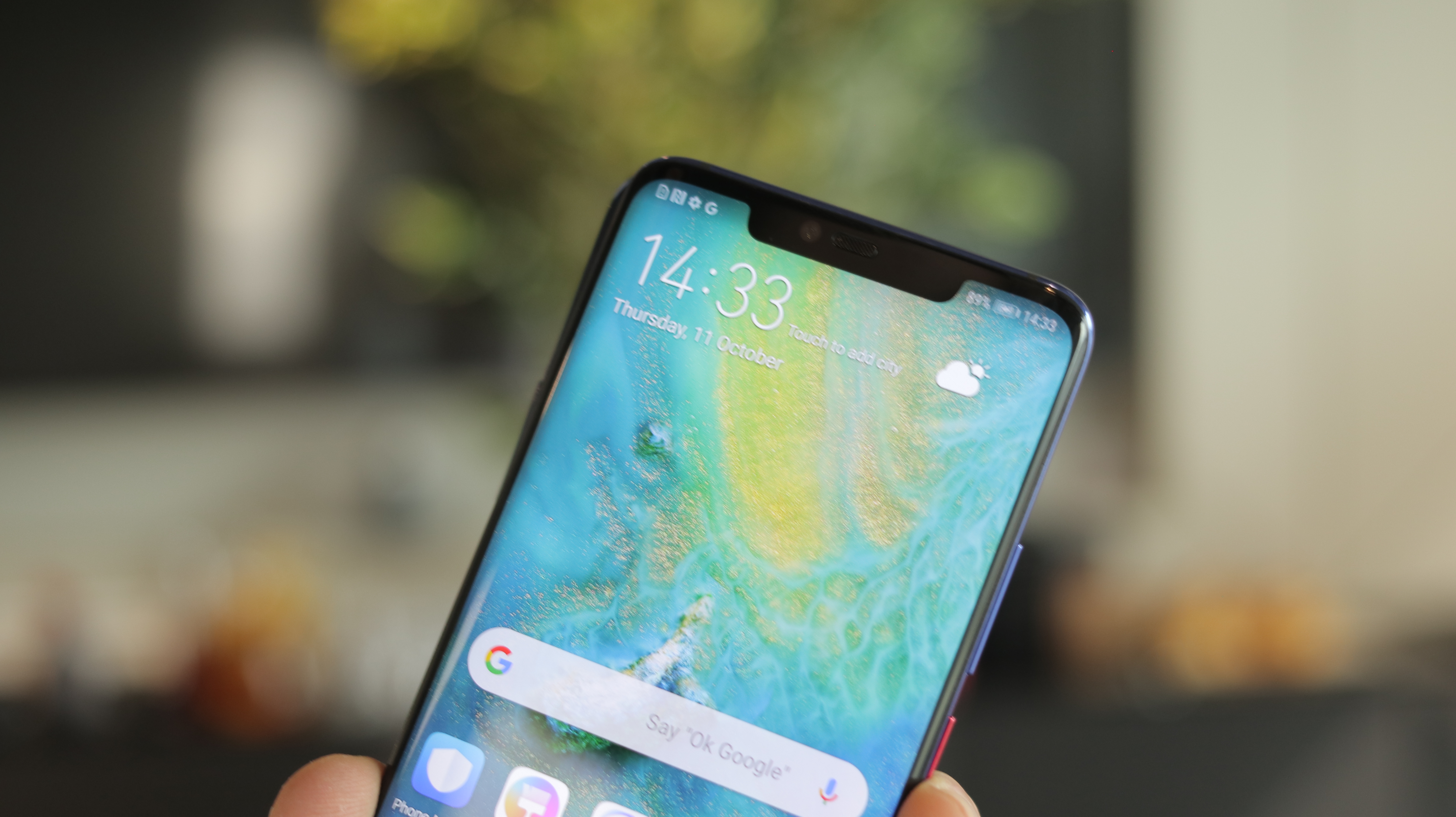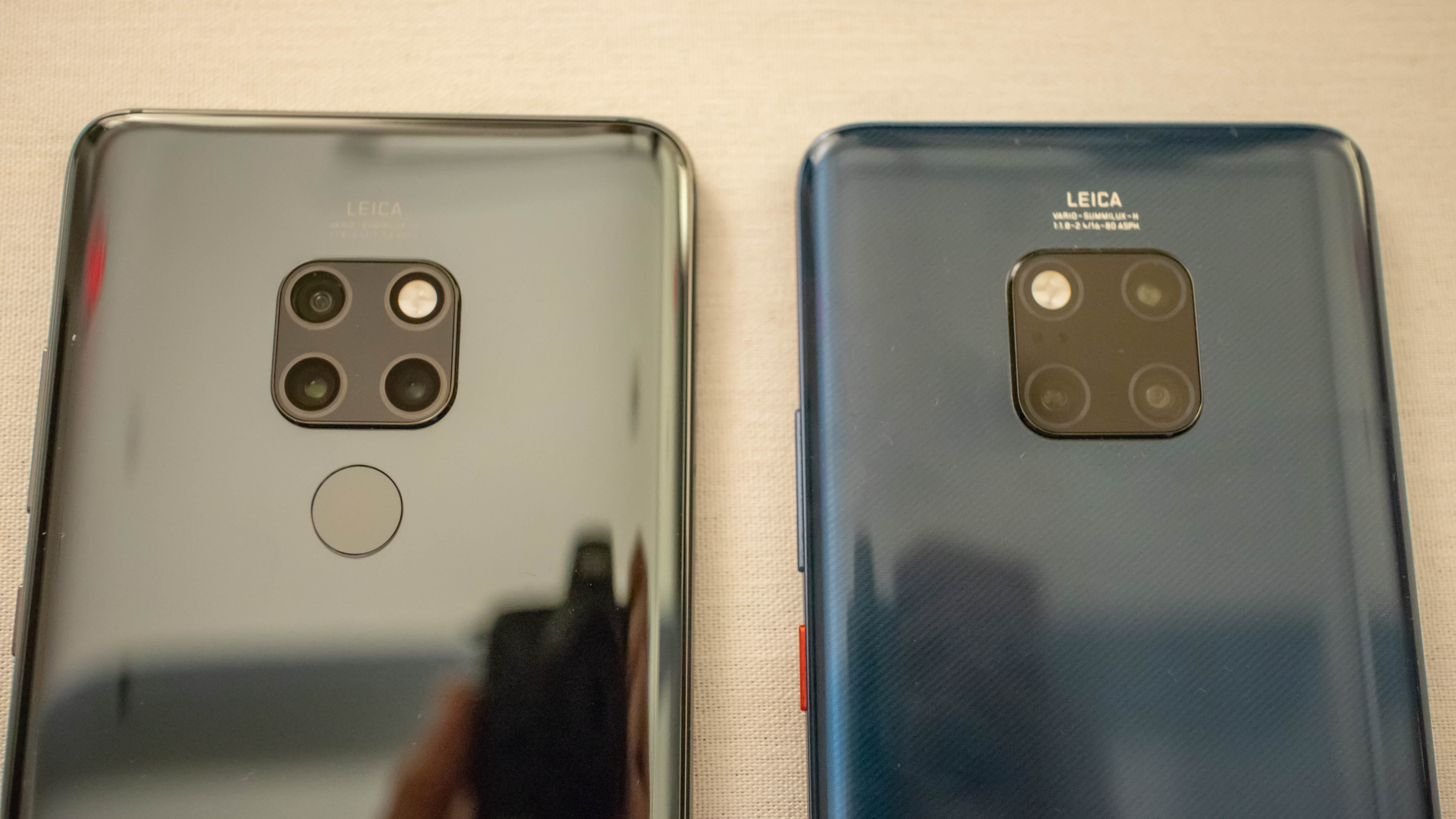Huawei Mate 20 vs Huawei Mate 20 Pro

There are very few flagships left to come this year, but some of the best may have been saved for last, as the Huawei Mate 20 and Huawei Mate 20 Pro have just been announced and both come packing high-end tech and features alongside premium designs.
However, they’re also quite different in a lot of ways and some of those differences are immediately obvious by looking at them.
So with that in mind we’ve created this rundown of their key specs and features, so you can see exactly how similar – or not – they are.
Update: The prices for the phones have been unveiled at the launch: €1049 (around $1215 / £920) for the Mate 20 Pro, and €899 (around $1040 / £790) for the Mate 20 in the 6GB and 128GB variants, showing how the cost has been brought down on the lower-spec Mate 20.
Huawei Mate 20 vs Huawei Mate 20 Pro design

We can’t talk about the design without talking at least a little about the screen, as it’s one of the most immediately obvious differences between these two phones.
On the Huawei Mate 20 you get a flat screen with almost no bezel below it and just a tiny teardrop notch at the top, while on the Mate 20 Pro the screen is curved, but it has a larger bottom bezel and a more substantial notch as well.
The rest of the design is not so different. Both phones have a metal frame and a glass back, with that back housing a big square camera block, with three lenses and a flash, though the position of the flash differs between them (it’s on the right on the Mate 20 and the left on the Huawei Mate 20 Pro).
Sign up for breaking news, reviews, opinion, top tech deals, and more.

Beneath the camera you’ll find a fingerprint scanner on the Huawei Mate 20, while the Mate 20 Pro’s is built into its screen.
Dimensions and weight also differ, though not by a huge amount. The Huawei Mate 20 is 158.2 x 77.2 x 8.3mm and 188g, while the Huawei Mate 20 Pro is 157.8 x 72.3 x 8.6mm and 189g. So the Mate 20 Pro is ever so slightly shorter, but wider, thicker and a tiny bit heavier than the Mate 20.
There’s no difference in the available colors though, with both handsets coming in Emerald Green, Midnight Blue, Twilight, Pink Gold and black shades.
Huawei Mate 20 vs Huawei Mate 20 Pro display
The Huawei Mate 20 has a 6.53-inch flat RGBW display with a resolution of 1080 x 2244, while the Huawei Mate 20 Pro has a 6.39-inch curved OLED screen with a resolution of 1440 x 3120.
So surprisingly the Mate 20 Pro actually has a smaller display than the Huawei Mate 20, which explains how the phone is slightly shorter despite the larger bezels.

Whether you prefer the bezel-free look of the Mate 20 or the curved screen of the Mate 20 Pro will be subjective, but the display on the Mate 20 Pro both sharper and better.
It also has a slightly different aspect ratio, with the Huawei Mate 20 Pro being 19.5:9, while the Huawei Mate 20 is 18.7:9, though both screens support HDR.
Huawei Mate 20 vs Huawei Mate 20 Pro OS and power
There’s very little difference here. Both phones have an octa-core Kirin 980 chipset, with two high-performance cores clocked at 2.6Ghz, two cores clocked at 1.92Ghz, and four cores running at 1.8GHz. They also both have a Mali-G76 GPU and dual neural processing units (NPUs).
The only real potential difference in power is the amount of RAM each phone has, as while the Huawei Mate 20 Pro comes with 6GB of the stuff, the standard Huawei Mate 20 comes in two configurations – one with 6GB and one with 4GB.

Storage is 128GB though whichever phone or model you choose, and they all have a nano memory card slot too to expand things up to 256GB - this is Huawei's proprietary format.
There’s no difference in the operating system either. They both run Android 9 Pie overlaid with Huawei’s EMUI 9 interface.
Huawei Mate 20 vs Huawei Mate 20 Pro camera and battery
Both phones have a triple-lens rear camera, but the specs aren’t identical. The Huawei Mate 20 has a 16MP f/2.2 ultra-wide-angle lens, a 12MP f/1.8 wide-angle lens and an 8MP f/2.4 telephoto lens. That last lens has optical image stabilization (OIS) and allows for 2x optical zoom.
The Huawei Mate 20 Pro meanwhile has a 20MP f/2.2 ultra-wide-angle lens, a 40MP f/1.8 wide-angle lens and an 8MP f/2.4 telephoto lens, with OIS and support for 3x optical zoom. So two of its lenses have a higher megapixel count and the third allows for greater zoom.

This doesn’t necessarily mean that the Mate 20 Pro has a better camera but it’s likely to – stay tuned for our full reviews to find out for sure.
On the front though both phones have a 24MP f/2.0 camera, so there shouldn’t be any difference there.
For battery, you get a 4,000mAh one in the Huawei Mate 20 and a 4,200mAh one in the Huawei Mate 20 Pro. So the Mate 20 Pro’s is bigger despite it having a smaller screen.
As such it may last longer, though it does have more pixels to push around, and you’ll have to wait for our review to know for sure. Both of those battery sizes are big though.
The Mate 20 Pro should also charge faster, as it supports 40W Huawei SuperCharge, while the Mate 20 only supports 22.5W. The former can charge the phone to 70% in 30 mins, while the latter will (probably get to around 40-50%).
Takeaway
The Huawei Mate 20 and Huawei Mate 20 Pro both look to be compelling flagships but interestingly it’s not a clear-cut case of the Mate 20 Pro being better in every way.
Many may prefer the (more) bezel-free design of the standard Mate 20 for example, and the standard Mate 20 also has a slightly bigger screen.
Most of the differences do seem to work in the Mate 20 Pro’s favor though, from the resolution to the cameras, battery and fingerprint scanner placement. Though on the all-important power front there’s not much to choose.
We’ll let you know how good each phone actually is once we’ve put them through a thorough review. On paper though both offer some real flagship specs, with the Huawei Mate 20 Pro edging ahead in a few key ways.
James is a freelance phones, tablets and wearables writer and sub-editor at TechRadar. He has a love for everything ‘smart’, from watches to lights, and can often be found arguing with AI assistants or drowning in the latest apps. James also contributes to 3G.co.uk, 4G.co.uk and 5G.co.uk and has written for T3, Digital Camera World, Clarity Media and others, with work on the web, in print and on TV.